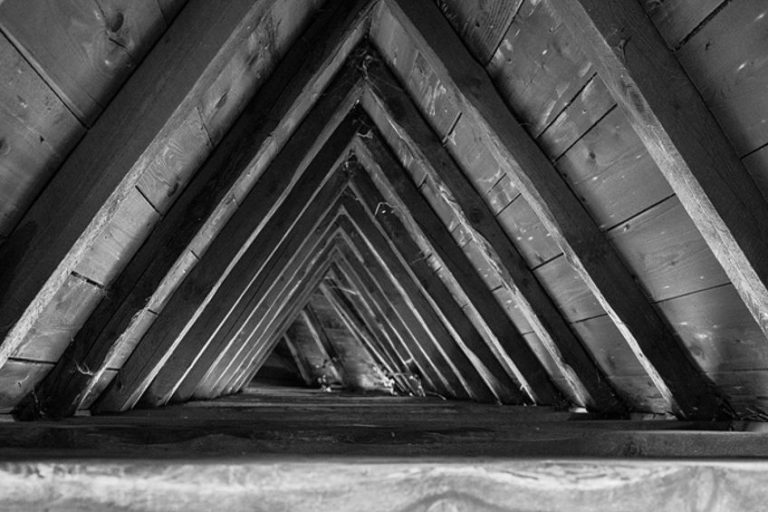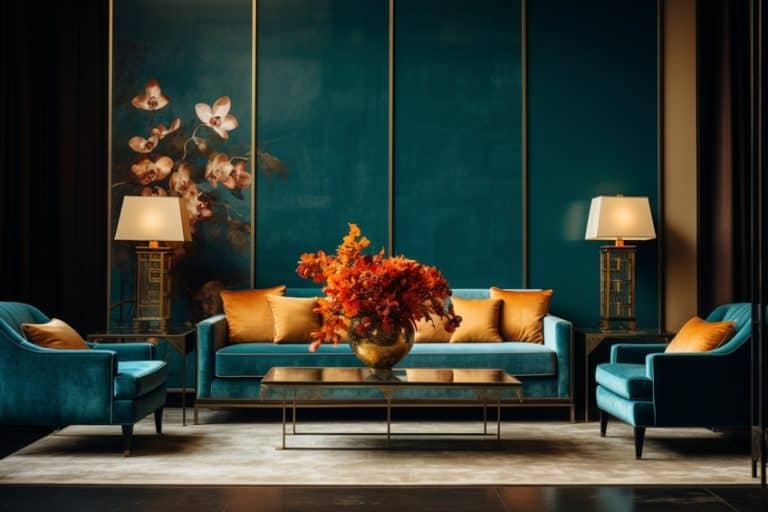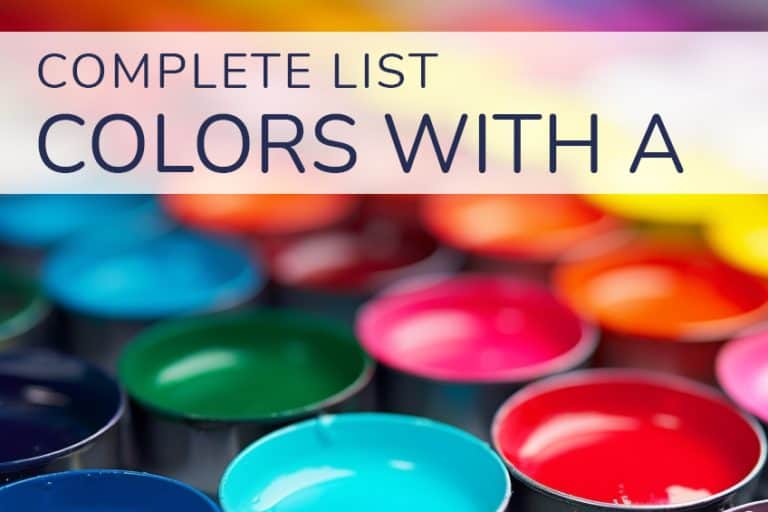Neon Colors – Creating and Using Bright Neon Colors in Your Art
All neon colors are bright and intense and can create an atmosphere of excitement. Bright neon colors are meant to attract your attention, which is why many use these colors to add energy to designs. The most common use for these colors is the neon signs found along main roads, advertising various businesses. However, is neon a color, and where does the name originally come from?
What Colors Are Neon?
Neon is technically a noble gas that is located on the periodic table, which can be used in things like lamps, television tubes, and lasers. However, when describing neon, it can be said to be very bright or even fluorescent light colors. These two terms are used interchangeably as a description, but technically, fluorescent light is different as it uses mercury vapor instead of a noble gas.
So, is neon a color? Yes, neon can be described as a color, which is usually extremely bright versions of your primary as well as secondary colors. You cannot find these colors on a traditional color wheel, as these colors emit light, which is what makes them luminescent. This makes it difficult to produce neon colors with paint unless you use special pigments.

When it comes to the RGB color model or digital colors, you are more likely to achieve better results. So, you can make use of a neon color wheel to create color combinations, as you are using the general and original primary and secondary colors.
However, as opposed to using a CMYK color model, which is used when printing, this is an additive model, meaning the ink is layered to create the different colors, which can result in less vibrant or muddy colors. Also, neon colors are created with light, so when printing neon colors, you will have to use special pigments.
Neon is not the only noble gas that produces colored light, although the name is used in general for the type of colors they produce.
Each gas produces a different color when mixed with other elements and gases. While neon itself produces a red-orange light, some of the other popular colors related to the noble gases include the following.
- Helium: Orange-white and pink-red
- Argon: Pale blue to violet
- Xenon: Blue, off-white, green, or gray
- Krypton: Yellow, green, or off-white
- Radon: Yellow (radioactive)
History of Neon Colors
Neon paints only became popular much later after synthetic pigments began being manufactured. The bright neon colors are not natural and so have to be created using various chemical methods. All pigment neon colors are difficult to emulate, as the real colors are forms of light. However, today you can get pigments that even glow in the dark.
When it comes to neon light, the discoveries began during the mid-to-late 19th century. The beginnings can be traced back to a physicist and glassblower in Germany, Heinrich Geissler. He discovered how you can create an electric current within a sealed glass tube, by using electrodes. The electric current is what makes the gasses glow and so neon lighting was discovered.

The term “neon” can be credited to a few scientists. First, Morris Travers and Sir William Ramsay, both British scientists, found out how to liquefy air, which they could then separate into segments. One of these segments was named neon. Some years later, Georges Claude, a French engineer, designed a tube of neon glass that could be used as a lamp. So, he was dubbed the official creator of neon and the first neon lights then appeared in 1910, which were then sold and used in the first neon signs.
Next, comes the discovery of luminescent paint, which was created in the 1930s, by Bob Switzer who lived in Ohio. After an accident, he was told to rest in a darkened room, and he passed the time by experimenting with fluorescent minerals, which he then later mixed with wood varnish. This then became the basis for what is known as Day-Glo, which was eventually used in the Second World War to create better visibility for soldiers.
Neon signs were found in abundance in Times Square during the 1950s. This was due to the Artkraft Strauss design company. Much later, in 2006, these signs were auctioned and sold for a lot of money, about 100 000 dollars.
During the 1930s and 1940s, neon art became popular as a way to represent modern times. Popular art pieces were also created over the next few decades. For example, the pink neon cow against a bright yellow background by visual artist, Andy Warhol. Keith Sonnier is another artist who created well-known neon sculptures like the one on display at the International Airport in Munich. Pop culture was at its height during the 80s and was quite commonly found in clothing and other accessories like shoes and bows.
The 1990s saw an increase in the party scene and events known as neon raves, where glow sticks and the neon smiley face on clothing were commonly used. Neon body and face paint were also used during various events and parties.

The neon trend began to subside over the following years, however, in 2007, Reebok created neon shoes that glowed in the dark. Neon colors are also still quite popular in the sporting world. Even though the neon trend is over, neon colors are still being used in many ways from hair dye to nail polish, make-up, and clothing.
A more practical use for neon colors is in industrial clothing for safety reasons and to help increase the visibility of those wearing the work clothes. Neon colors are also used in signs for the same purpose.
Meaning of Neon Colors
Every color has a meaning, so all neon colors should also have some associated meanings. One of the more functional reasons for using neon colors in a design is because it catches your attention. As mentioned, neon colors are brighter versions of your primary and secondary colors, so this means some of the traits will be shared and some may be distorted.
For example, pure green is associated with growth and all things natural. However, a neon green can have the opposite effect and might be associated with things that are unnatural like fake or artificial grass or glow-in-the-dark chemicals.
On the other hand, neon pink and pure pinks are both fun and playful colors. Neon colors can also be fun and energetic, but due to their connection with parties and nightlife, they can be seen as frivolous and excessive. Certain neon colors can also be associated with danger, as they can be used as warning signs because of their high visibility.
Popular Neon Colors
Neon colors might not be as popular as some other colors, but many like to use them to place a pop of color in designs. All neon colors follow in the footsteps of the primary and secondary colors, so if your favorite color is blue, you will most probably also like the electric blue color. Below we have gathered a list of a few of the more popular bright neon colors.

Neon Green
Most neon colors can be described as bright or vibrant, like neon green and electric lime green. The brightness is mostly associated with energy, excitement, and vibrancy. Neon green can be compared with lime green, which can be found on the color wheel. However, there are slight variations in their makeup, making neon green a little more vibrant. As with all intense colors, it is best used as an accent color and can add a bit of interest to a design.
Below you will also find two more examples of green bright neon colors.
| Neon Shade | Neon Color Hex Codes | CMYK Neon Color Code (%) | RGB Neon Color Code | Neon Color |
| Neon Green | #39ff14 | 78, 0, 92, 0 | 57, 255, 20 | |
| UFO Green | #7fff00 | 50, 0, 100, 0 | 127, 255, 0 | |
| Electric Lime | #ccff00 | 20, 0, 100, 0 | 204, 255, 0 |
Electric Orange
Electric orange is bright orange and is associated with warmth and enthusiasm. In the RGB color model, which are the digitally created colors, you can see it contains 100 percent red and a little green, which is why it catches your eye so effectively. Another example that is closely related to electric orange, is neon red. This color also contains mostly red, but brings in green and blue, to create a vibrant red.
| Neon Shade | Neon Color Hex Codes | CMYK Neon Color Code (%) | RGB Neon Color Code | Neon Color |
| Electric Orange | #ff5e00 | 0, 63, 100, 0 | 255, 94, 0 | |
| Neon Red | #ff3131 | 0, 81, 81, 0 | 255, 49, 49 |
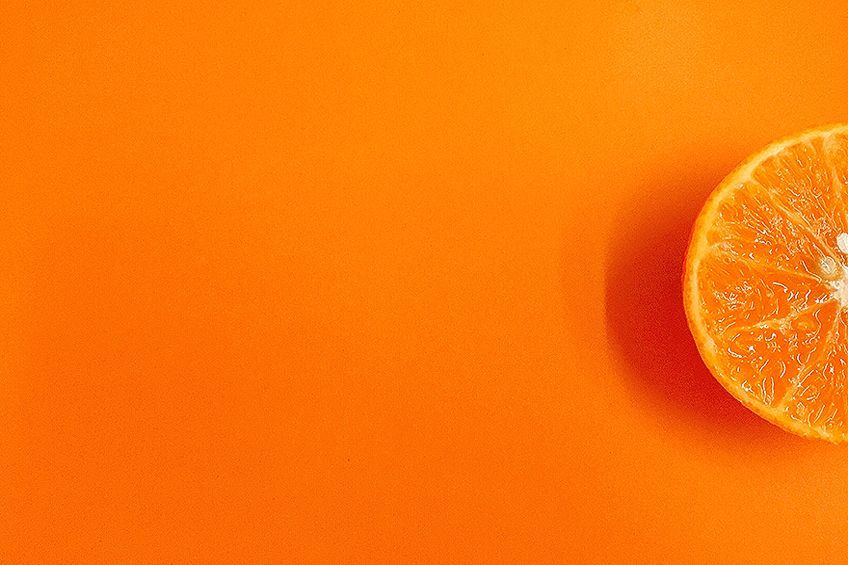
Electric Blue
The electric blue color can also be described as a vibrant or electric cyan color. The color is associated with a spark of electricity, as well as the color that ionized argon gas produces. This makes the color a connection to the excitement, energy, and action. The name was recorded in 1884, so it has been around for many years. Another example within the same color family is neon blue. This color was only named after the invention of blue neon lights, which was in the early 20th century.
You will observe that it is a shade darker when compared to the electric blue.
| Neon Shade | Neon Color Hex Codes | CMYK Neon Color Code (%) | RGB Neon Color Code | Neon Color |
| Electric Blue | #0ff0fc | 94, 5, 0, 1 | 15, 240, 252 | |
| Neon Blue | #1f51ff | 88, 68, 0, 0 | 31, 81, 255 |
Neon Pink
Neon pink is a vibrant color that comes in a variety of shades. Sometimes, neon pink can be confused with hot pink, but neon pink is a lot brighter. The color may have a nostalgic feel about it, as the color came about when neon lights were popular in the 80s and appeared to be quite futuristic to many.
| Neon Shade | Neon Color Hex Codes | CMYK Neon Color Code (%) | RGB Neon Color Code | Neon Color |
| Neon Pink | #ff44cc | 0, 73, 20, 0 | 255, 68, 204 | |
| Plastic Pink | #ff1493 | 0, 92, 42, 0 | 255, 20, 147 | |
| Neon Magenta | #ea00ff | 8, 100, 0, 0 | 234, 0, 255 |

Electric Purple
This is a vibrant and bright purple and carries similar associations to the family of purple colors, including luxury, creativity, and power but with more energy and vibrancy.
The proton purple, another vibrant purple, was deemed a color trend for 2019 by the well-known American company Shutterstock.
| Neon Shade | Neon Color Hex Codes | CMYK Neon Color Code (%) | RGB Neon Color Code | Neon Color |
| Electric Purple | #bc13fe | 26, 93, 0, 0 | 188, 19, 254 | |
| Proton Purple | #8a2be2 | 39, 81, 0, 11 | 138, 43, 226 |
Neon Yellow
The neon yellow is a vibrant color that appears to give off a glow. The color was not common to neon light in the past, as it may have been too close to the conventional incandescent lighting and was less appealing and dramatic when compared to other colors for advertising. Included below are a few variations of the yellow color.
| Neon Shade | Neon Color Hex Codes | CMYK Neon Color Code (%) | RGB Neon Color Code | Neon Color |
| Neon Yellow | #fff01f | 0, 6, 88, 0 | 255, 240, 31 | |
| Fluorescent Yellow | #e9f721 | 6, 0, 87, 3 | 233, 247, 33 | |
| Absinthe | #e7ee4f | 3, 0, 67, 7 | 231, 238, 79 | |
| Chartreuse Yellow | #dfff00 | 13, 0, 100, 0 | 223, 255, 0 |
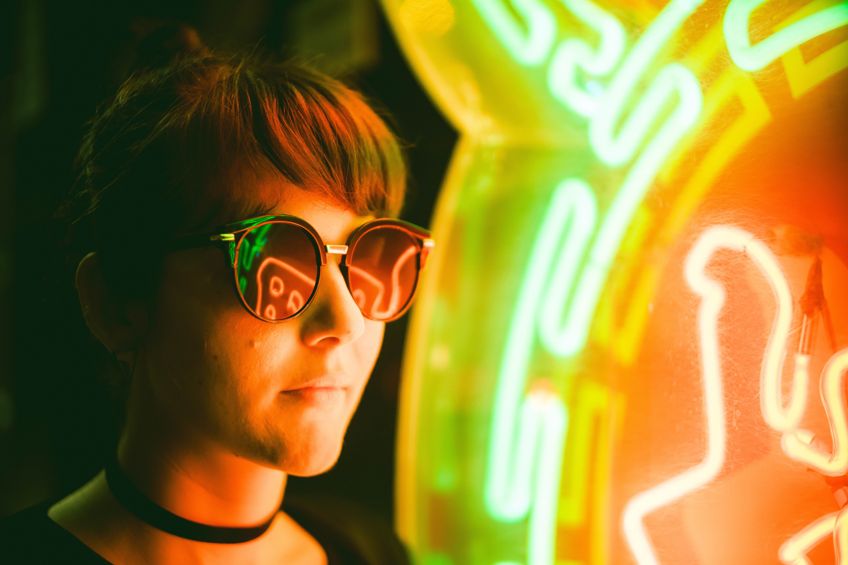
Neon Color Combinations
There is no actual neon color wheel, however, since the neon colors are all directly related to the primary and secondary colors, you can use a traditional color wheel. A color wheel makes it easier for you to design and use color combinations that work. There are a few popular color combinations, and topping the list are complementary colors.
These colors are opposite each other when looking at a color wheel. So, if you take neon blue, the complementary color will be neon orange. These colors create even more of a color contrast when positioned close to each other.
It is possible to use a neon-on-neon color combination for an electrifying and eye-catching design, especially if it is for a fun festival or another type of energetic event. However, you can also tone them down by combining them with more muted or neutral colors. This would be a better option for use in fashion and interior design, which will work better with a touch of neon to brighten things up.
| Shade | Color Hex Codes | CMYK Color Code (%) | RGB Color Code | Color |
| Neon Blue | #1f51ff | 88, 68, 0, 0 | 31, 81, 255 | |
| Neon Orange | #ffcd1f | 0, 20, 88, 0 | 255, 205, 31 |

Other color combinations you might want to look into include the use of two, three, or even four colors. These include your monochromatic colors, which provide variations of a single color, and analogous colors that are colors found next to one another. There are also more challenging combinations like triadic and tetradic colors that are also great for forming color contrasts. These are spaced evenly out over a color wheel in different forms from a triangle to a rectangle or square. Below are colors that fall into a tetradic color combination.
| Shade | Color Hex Codes | CMYK Color Code (%) | RGB Color Code | Color |
| Vibrant Blue | #1355fe | 93, 67, 0, 0 | 19, 85, 254 | |
| Electric Purple | #bc13fe | 26, 93, 0, 0 | 188, 19, 254 | |
| Vibrant Orange | #febc13 | 0, 26, 93, 0 | 254, 188, 19 | |
| Vibrant Green | #55fe13 | 67, 0, 93, 0 | 85, 254, 19 |
How to Mix Neon Colors
In general, neon colors can only be bought as they need to be properly manufactured to get the neon colors that also glow in the dark. However, you can create your own neon colors by mixing in some neon pigment powder. Also, depending on the medium you use, it is difficult to find neon paints. You can get readily available neon acrylics, but you are less likely to find neon oils and watercolors.
Neon colors can provide certain increased energy to paintings that catch the eye. The bought neon acrylic paints can easily be used on paper or canvas and are your best option. However, you can make paint colors that are close to neon by simply purchasing any bright colors and then mixing them with glazes or varnish. However, the distinguishable glow of neon colors will still not be present.
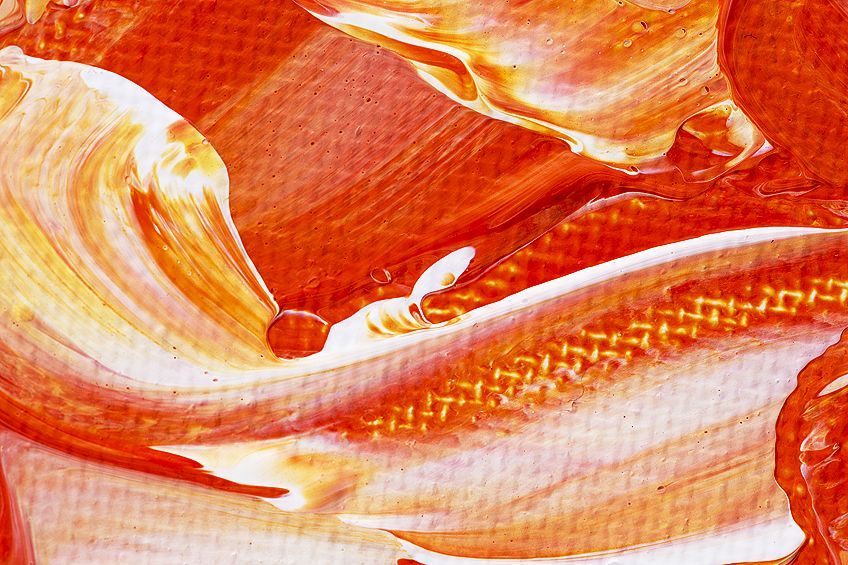
The most common way of mixing your own neon colors is to use acrylic paints and neon pigment powders. So, if you are looking for neon green, you will need green acrylic paint to which you add some neon pigment powder. You should experiment with different amounts until you get what you are looking for. Begin mixing small amounts and work from there. Try not to go for the cheap paint and powder pigments as this could affect the outcome and you might just be wasting your money.
Another option to try is to use gesso and neon pigment powders. You can use the white gesso, but you will need more pigment. Using the clear gesso might be a better idea as it provides more suitable effects. You can mix as you do with acrylic paints.
To help with the fading of colors over time, it is also a good idea to apply a varnish finish to protect the surface.
Designing With Neon Colors
You might not think that neon colors are the best choice for any design as they are so vibrant. However, they can be used effectively to attract a viewer’s attention in the case of websites and other advertising methods. For example, create a neon “buy now” button so buyers can easily see where to go to purchase an item. Neon colors can also help to create a more unforgettable brand.
Neon colors are also popular in fashion design and beauty. The colors are often used in manicures and make-up. You can also wear an entire outfit as a bold statement or simply add in a pop of neon color for a more conservative look that can still attract attention. Neon colors are common in active wear as they bring in a certain amount of energy and can also act as a reflective surface if you find yourself walking or running in the dark.
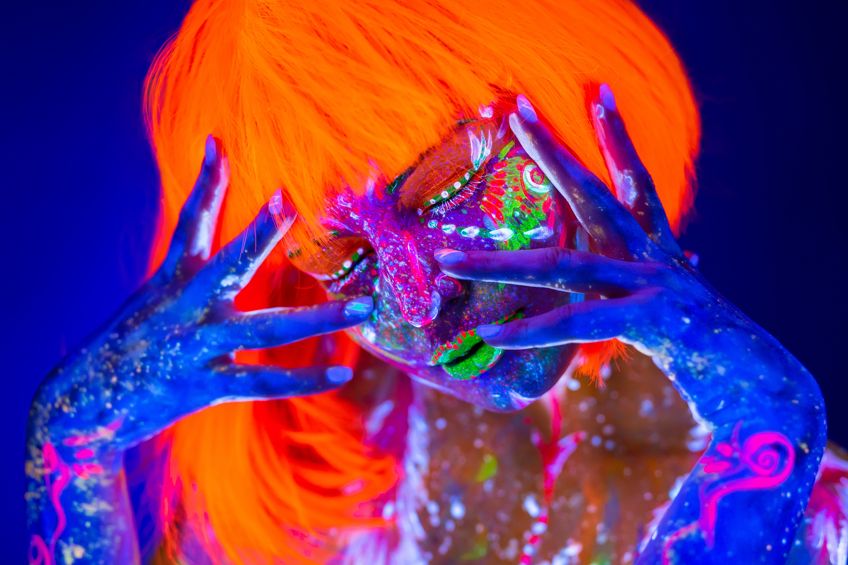
When it comes to interior design, it is best to use neon colors in moderation so as not to overwhelm a space. Bringing in a cushion or even a classic neon sign can add a playful and fun element to a space. You can even use bright color couches, rugs, or wall décor to bring a more festive look to a room. Any of these options can create a nice focal point in a room. For example, placing a neon couch or painting against a neutral background that is white or a darker blue or even black, can create maximum contrast. You can however use as little or as many of the colors as you prefer, the aim is to find a balance of colors that works.
Bright neon colors can bring a fun and invigorating element into any design. Since these colors are so vibrant, they should be used carefully to avoid them becoming too overpowering and hard to look at. However, do not let this intimidate you, have fun with the colors and see what amazing things you can do with them.
Frequently Asked Questions
What Colors Are Neon?
Neon colors are bright, vibrant, and have a certain glow to them, similar to the neon signs that were popular in the past. All neon colors form part of your primary and secondary color range, so you can have neon blue, red, yellow, green, orange, purple, and more.
Can You Mix Acrylic Neon Paint Colors?
When dealing with how to mix neon colors with acrylic paints, it is best to simply purchase already made neon colors as they need to be manufactured correctly to get the proper effect. However, you can combine vibrant acrylic colors with neon pigment powders to get an approximate effect.
Can You Use Neon Colors for Interior Design?
Yes, neon colors can add a playful element to any space and brings in more energy to a space. However, when using neon colors, it is a good idea to do so sparingly and should complement your existing design scheme. So, these colors are best used as accent colors, for example, neon cushions and other accessories, maybe even an accent wall.
In 2005, Charlene completed her Wellness Diplomas in Therapeutic Aromatherapy and Reflexology from the International School of Reflexology and Meridian Therapy. She worked for a company offering corporate wellness programs for a couple of years, before opening up her own therapy practice. It was in 2015 that a friend, who was a digital marketer, asked her to join her company as a content creator, and this is where she found her excitement for writing.
Since joining the content writing world, she has gained a lot of experience over the years writing on a diverse selection of topics, from beauty, health, wellness, travel, and more. Due to various circumstances, she had to close her therapy practice and is now a full-time freelance writer. Being a creative person, she could not pass up the opportunity to contribute to the Art in Context team, where is was in her element, writing about a variety of art and craft topics. Contributing articles for over three years now, her knowledge in this area has grown, and she has gotten to explore her creativity and improve her research and writing skills.
Charlene Lewis has been working for artincontext.org since the relaunch in 2020. She is an experienced writer and mainly focuses on the topics of color theory, painting and drawing.
Learn more about Charlene Lewis and the Art in Context Team.
Cite this Article
Charlene, Lewis, “Neon Colors – Creating and Using Bright Neon Colors in Your Art.” Art in Context. August 1, 2022. URL: https://artincontext.org/neon-colors/
Lewis, C. (2022, 1 August). Neon Colors – Creating and Using Bright Neon Colors in Your Art. Art in Context. https://artincontext.org/neon-colors/
Lewis, Charlene. “Neon Colors – Creating and Using Bright Neon Colors in Your Art.” Art in Context, August 1, 2022. https://artincontext.org/neon-colors/.




